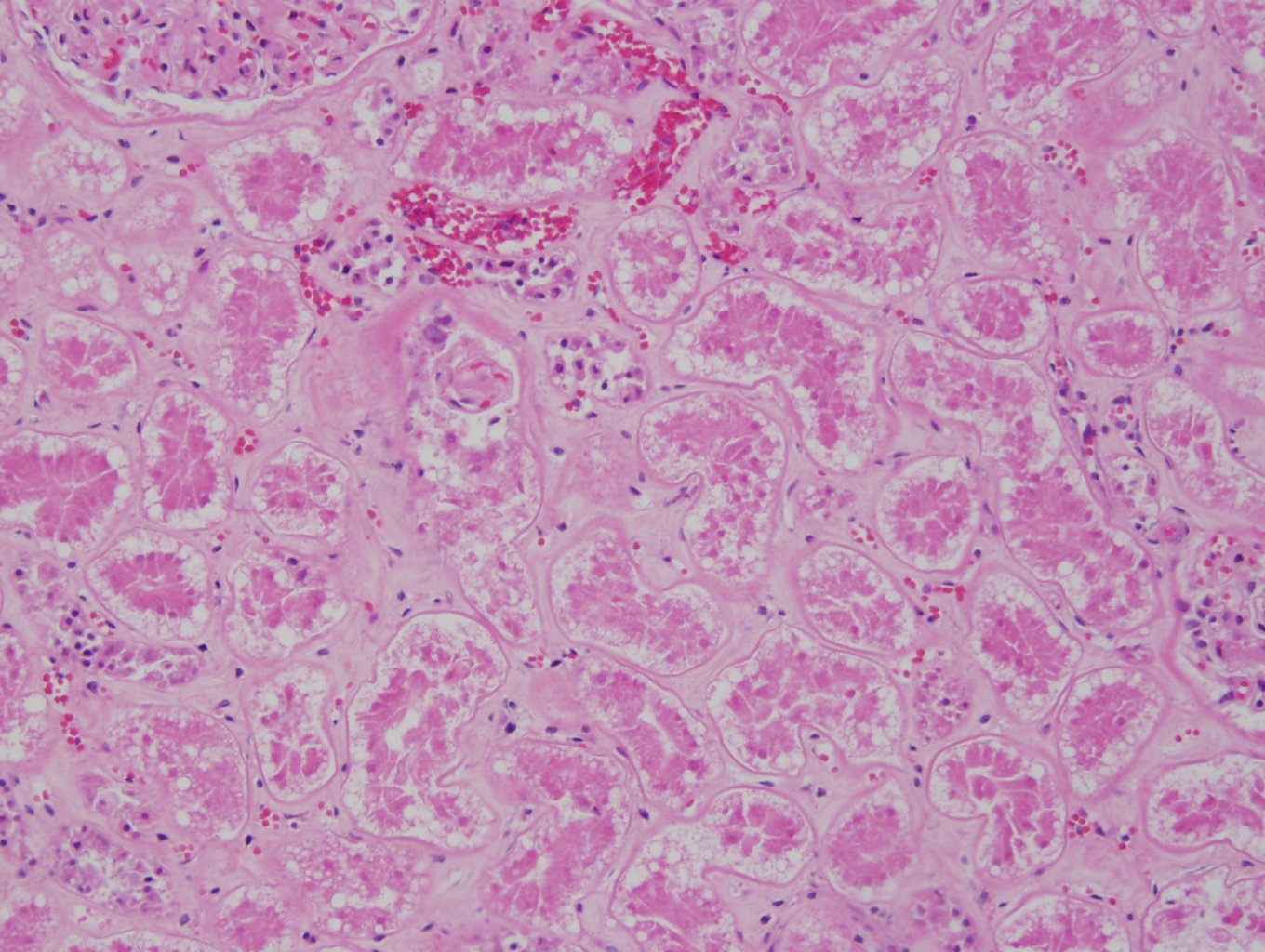

Case, image 1: This was a 56 year old man who died of diabetic ketoacidosis due to insulin dependent diabetes. Postmortem vitreous evaluation showed a dramatically elevated gluose (828 mg/dL), elevated urea nitrogen and creatinine and hyponatremia, consistent with diabetic ketoacidosis. Armanni-Ebstein change seen as subnuclear vacuoles in the collecting tubules.
Case 1, image 2: A higher power image. The kidney is autolyzed, as seen by the dissolution of detail. However, the vacuoles are still clearly visible.
Case 2, image 1: This was a 46 year old woman who died of acute pancreatitis due to chronic alcoholism. The inflammation in the pancreas resulted in destruction of islets and without insulin, there was a build-up of glucose in the blood and vitreous. Vitreous glucose was 912 mg/dL.
Case 2, image 2: Again, even though this tissue is somewhat autolyzed, the subnuclear vacuoles are still pretty prominent.
Case 3, image 1: This was a 40 year old man who died of diabetic ketoacidosis. Vitreous glucose was 568 mg/dL. Appreciate subnuclear vacuoles within the renal tubules.
A section of the kidneys from this decedent demonstrated Armanni-Ebstein change, which are are subnuclear vacuoles within the renal tubules.
Armanni-Ebstein change is mostly seen in diabetics with poorly controlled blood glucose levels and in forensics, commonly encountered in individuals who died from diabetic ketoacidosis.